Simple Steps to Reduce Ocean Pollution
How Small Changes Make a Big Impact


Diving Deeper: Taking My First Steps into Ocean Conservation
After diving into the world of ocean conservation for the first time, I quickly realized just how vast and complex this topic is. There’s so much to learn—from understanding the biggest threats to our oceans to figuring out where and how I can personally make an impact. As a beginner, it’s easy to feel overwhelmed, but I’ve come to see that every small step counts.
In my last blog, I shared my initial thoughts on starting this journey. Now, I want to take a closer look at how a beginner like me (and maybe you) can get involved. Whether it’s through small lifestyle changes, supporting conservation groups, or directly participating in hands-on efforts, there are many ways to contribute. This is my attempt to break it down and make the first steps feel a little more approachable.
Small Changes, Big Impact: Starting From Within
I strongly believe that everything starts within us and moves outward. Just like an old habits. Tackling ocean pollution isn’t about making drastic changes overnight—it’s about small, consistent actions that add up over time. Before we even think about large-scale conservation efforts, we need to look at our own habits. The little things we do each day, the products we use, and the choices we make all contribute to the bigger picture.
One of the simplest ways to start is by reducing single-use plastics. It’s easy to overlook just how much waste we generate daily, but if you take a moment to think about it, the numbers are staggering. From plastic bottles to food packaging, these items often end up in the ocean, harming marine life and disrupting ecosystems. That’s why the first step isn’t about trying to clean up the entire ocean all at once—it’s about that transition to build up better habits. By slowly swapping out commonly used disposable products and choosing reusable alternatives when possible, we can significantly cut down on our plastic footprint and become more conscious of our consumption. Each mindful choice we make is a step toward a cleaner, healthier ocean. And when enough people take those steps, the impact becomes undeniable. One change I’ve changed over the years is using tote bags for shopping. Initially, it wasn’t a choice I made consciously—I wasn’t aware of ocean conservation at the time. It all started when the government introduced legislation to charge for plastic bags. But the impact has been incredible. Now, I find myself loving it. It’s become second nature to fold up a couple of tote bags and tuck them into my jacket or backpack, always ready to go.
Simple Swaps for a More Sustainable Lifestyle
Making small, conscious swaps in our daily routines can significantly reduce the amount of plastic waste we produce. Here are a few easy changes that can make a big difference:
Reusable Water Bottles – These days, fitness has become such a big part of our daily lives. A sleek water bottle or protein shaker can be a solid investment to ditch the plastic bottles. You can just bring them with you wherever you go and refill them whenever you get the chance. So, ditch plastic bottles and opt for stainless steel, glass, or BPA-free reusable bottles.
Tote Bags – Say no to plastic bags by carrying a reusable tote for groceries and shopping. As I mentioned, I’m all about a cool-looking tote bag, so of course… D’riftr has plenty of tote bag designs to check out. Feel free to take a look!
Lunchboxes & Food Containers – Avoid disposable takeout containers by using reusable ones made from stainless steel, glass, or silicone. I get that sometimes it’s unavoidable to get food with take-out containers, but it’s still an effort we need to stick with.
Coffee Cups & Travel Mugs – Maybe it’s just me not knowing enough, but for some reason, cafés are really into eco-friendliness too. They’re always promoting 'bring your own mug' and sometimes even offering discounts for it. So, why not? Bring your own mug to cafés and skip the single-use cups!
Beeswax Wraps – While this isn’t as common as some of the other options, if you’ve seen them online, you know they’re super cool and convenient. So honestly, I don’t see why we wouldn’t swap to a sustainable, reusable option for covering food instead of using plastic cling wrap.
These swaps may seem small, but they make a big difference over time. The goal isn’t perfection—it’s progress. Even if you start with just one or two changes, you’re already making a positive impact. Plus, they’re just as convenient—if not more—than their single-use counterparts.
Local Actions & Clean-ups: Getting Hands-On in Conservation
While slowly changing our lifestyle helps reduce future waste, the reality is that pollution has already made its way into our oceans. This is where we can really step up and put in the effort—joining local beach and ocean clean-ups is one of the most impactful ways to make a difference. But why do beach and ocean clean-ups matter? Let’s look at some facts:
Plastic pollution affects over 800 marine species, from sea turtles mistaking plastic bags for jellyfish to seabirds feeding plastic fragments to their chicks.
Every year, millions of marine animals die due to entanglement in fishing nets and plastic debris.
These clean-ups help prevent more waste from breaking down into harmful microplastics, which are even harder to remove from the ecosystem.
Now, let’s look at the types of clean-ups we can join. Beach clean-ups are the most accessible option—even a short session can be an eye-opener to how much trash washes up daily. For those who dive or snorkel, ocean clean-ups focus on removing ghost nets, fishing lines, and plastic debris that pose serious threats to marine life. However, keep in mind that some ocean clean-ups require proper training and a certain level of diving experience, as handling debris underwater can be risky. Lastly, community-led river clean-ups are just as important since rivers carry waste straight into the ocean, making it crucial to stop pollution at the source. Participating in a clean-up isn’t just about picking up trash—it’s also an opportunity to understand waste management firsthand. Many organizations sort and categorize collected waste, teaching volunteers how to properly dispose of and recycle different materials. Seeing the sheer amount of single-use plastics firsthand can be a strong motivator to adopt more sustainable habits. Once you’ve participated in a few clean-ups, you might want to host your own. It can be as simple as gathering a group of friends or partnering with a local dive shop to arrange an ocean clean-up dive. Raising awareness in your community and encouraging others to join can amplify your impact!
Tips on Getting Involved
Check out events organized by environmental groups, dive shops, or local conservation organizations.
Some clean-ups provide equipment, but it’s always good to bring your own reusable gloves, a bucket or bag, and reef-safe sunscreen.
Don’t wait for an official event! Picking up trash whenever you visit the beach makes a difference over time.
Get friends and family involved—clean-ups are more fun (and impactful) when done together.
Spread the word! Sharing your efforts on social media can inspire others to join in and raise awareness about ocean conservation.
Spreading Awareness: The Power of Sharing Knowledge
When I first started writing this blog, I realized just how much I didn’t know. Greenwashing, coral bleaching, the sheer amount of plastic waste, and microplastics—these were terms I had heard before but never fully understood. The more I researched, the more I saw how interconnected these issues are and how much work still needs to be done.
It’s easy to feel overwhelmed, but awareness is the first step. Without learning about these problems, how can we expect to change them? And without sharing what we’ve learned, how can we expect others to take action? The truth is, many people continue harmful habits simply because they don’t know the impact. That’s why spreading awareness is so crucial—it’s not about making people feel guilty, but about giving them the knowledge to make better choices.
Sharing information can take many forms. It could be as simple as having a conversation with friends and family, posting on social media, or even joining discussions in online communities. Every small effort contributes to a bigger movement. Even just recommending a good documentary can open someone’s eyes to the realities of ocean pollution and conservation.
If you’re looking for a place to start, here are a few impactful documentaries that helped me see things differently:
A Plastic Ocean – Examines the devastating impact of plastic pollution on marine life and human health.
Chasing Coral – A deep dive into the global phenomenon of coral bleaching and its link to climate change.
Seaspiracy – Explores the darker side of commercial fishing and its impact on ocean ecosystems.
Mission Blue – Follows oceanographer Sylvia Earle’s lifelong mission to save our oceans.
The more we learn, the more we can do. And the more we share, the greater the ripple effect of change. Let’s keep the conversation going and help others see why protecting our oceans matters.
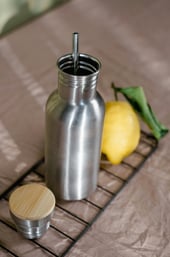





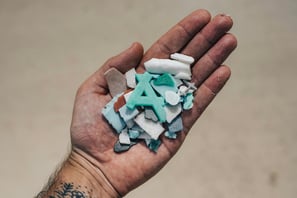

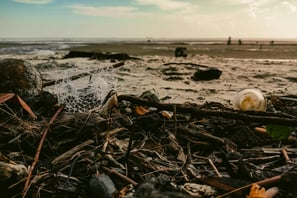

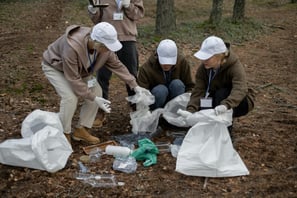

Becoming a Sustainable Consumer
As we talk about education, researching, and learning, one crucial aspect we haven’t covered yet is being a sustainable consumer. This means making conscious decisions about the products we buy, the companies we support, and the long-term impact of our purchases.
Unfortunately, sustainable consumerism is not yet a widespread practice globally. Many industries still prioritize profit over sustainability, and greenwashing—the practice of making products seem more eco-friendly than they actually are—can mislead well-intentioned consumers. But awareness is the first step. By educating ourselves, we can make better choices and demand more transparency from brands.
In the meantime, we can start small:
Support eco-friendly brands that prioritize sustainable materials and ethical production.
Reduce fast fashion consumption by choosing quality over quantity and exploring secondhand or ethical fashion brands.
Be mindful of packaging waste and avoid single-use plastics whenever possible.
One key issue that ties into sustainable consumerism is micro-plastics. These tiny plastic particles are in everything—from our oceans to the food we eat. They originate from plastic waste breaking down, synthetic fabrics shedding fibers, and even everyday products like toothpaste and cosmetics. Learning about the dangers of micro-plastics can be eye-opening, and one great way to start is by watching A Plastic Ocean. This documentary dives deep into the plastic pollution crisis and is an excellent resource for understanding why our consumer habits matter.
Every Small Action Leads to a Cleaner Ocean
Ocean conservation starts with awareness and small, daily actions. By changing our habits, participating in local clean-ups, educating ourselves and others, and making mindful consumer choices, we can collectively make a significant impact. No action is too small, and the journey toward a healthier ocean is one we take one step at a time.
As I continue to learn more about these issues, I encourage you to do the same. Let’s keep the conversation going, support one another in making sustainable choices, and work towards a cleaner, healthier planet together.
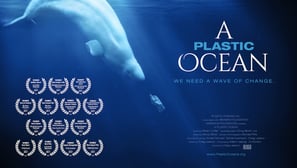

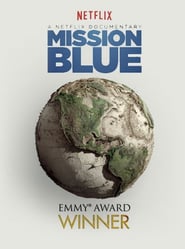

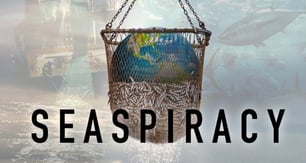

Explore
Celebrate coastal artistry and embrace the journey toward sustainable living
Crafted
CONTACT US
© 2025 Current Journeys. All Rights Reserved. The designs, images, and content on this website are the exclusive property of Current Journeys and may not be reproduced or used without written permission.
Return & Refund Policy
Inspired
